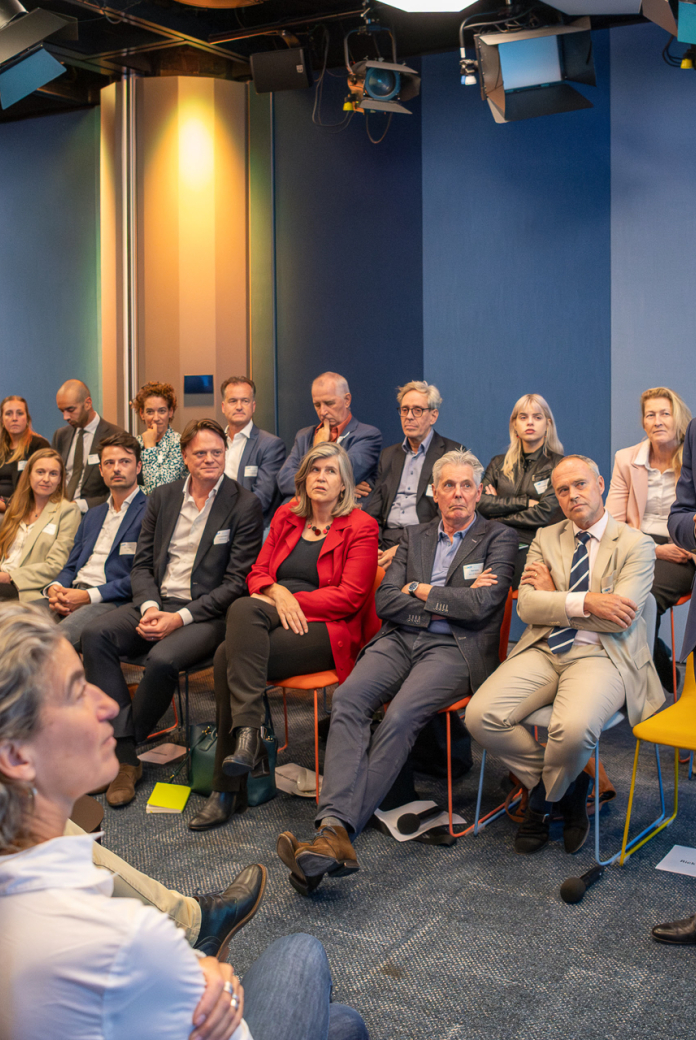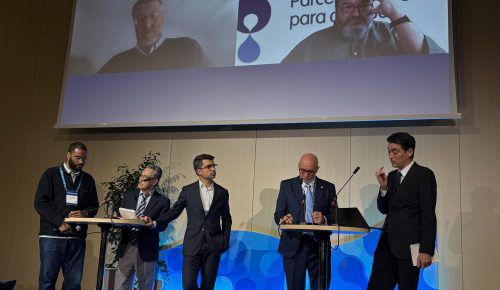News
26 August 2021A double first for Frontier Ventures in Egyptian sanitation planning project

A project in Egypt is the first international use and first application in the area of sanitation for a planning tool developed by NWP member Frontier Ventures, according to Duska Disselhoff, the company’s founder and Managing Director.
Duska Disselhoff founded Frontier Ventures BV to build on her experience gained in the oil and gas sector and apply it to the area of water management, especially in terms of developing business cases for investment. The company developed a tool called AquaVest to do this.
“AquaVest is a strategic infrastructure investment planning tool that can be used for water master planning and which takes the technical, economic, environmental and social benefits of infrastructure plans into consideration,” explains Disselhoff.
Disselhoff had seen that the oil and gas industry approach has much to offer the water sector. “The source of inspiration for AquaVest was an algorithm used by Shell. The oil and gas industry runs multiple scenarios to make investment propositions more robust. These scenarios look at future uncertainties in terms of supply and demand, including aspects such as climate change and potential policy developments.”
Applying Dutch technology in Egypt
Following previous use of AquaVest in two water reuse projects in the Netherlands, Frontier Ventures recently achieved a double first for the tool in a project in Egypt.
“The project is important for two reasons,” says Disselhoff. “The first is that it is a new application for AquaVest – it is the first project in the area of sanitation. The second is that it is our first project abroad.”
The study was commissioned by the Netherlands Enterprise Agency (RVO), financed by the Partners for Water Programme, and carried out for the Holding Company for Water & Wastewater Cairo (HCWW). It is the first field demonstration of how AquaVest can help bring Egypt’s approach to rural sanitation a step further.
“We are working on developing a business case which is based on economics, improved socio-economic conditions, and environmental benefits,” says Disselhoff. “The socio-economic aspects cover job creation and improved sanitation services will reduce mortality, while the environmental benefits are expressed in terms of a reduction in the chemical oxygen demand (COD) levels in surface waters.”
AquaVest allows decision makers to look at different scenarios. Septic tanks are often used in rural sanitation. Downstream water use such as for irrigation often leads to unplanned wastewater reuse including in areas where sewage has not been adequately treated. Meanwhile, treatment options such as the centralised anaerobic digestion of sewage sludge can feed the local energy supply. This illustrates how different aspects of sanitation are connected.
Anticipating sanitation improvements
For the Egypt project, AquaVest was used to develop a transition plan to achieve full coverage of secondary treatment by the UN Sustainable Development Goal target date of 2030. It explored a contextualised model based on Egypt’s governorates, and anticipated sanitation improvements at the village level in combination with centralised sludge treatment serving a cluster of villages.
“Several scenarios were run with AquaVest to develop a geographical master plan and business case for rural sanitation and sludge-to-energy that matches the vision of the HCWW for 2030,” comments Dr Rifaat Abdel Wahaab of HCWW. “AquaVest helped us to comprehensively understand the costs and socio-economic, environmental and technical benefits of different sewage and sludge handling options in rural villages in Egypt. It helped us close the gap between technical studies and financial evaluations.”
Disselhoff explains further. “To calculate the economic element of the business case, we have to define the costs of the master plan’s components. These components include rural sanitation units; the centralised sludge to energy generation elements; the revenues from the crops that are irrigated by effluent; the fish production that indirectly uses the effluents that are discharged to the surface water; and wood production plantations that directly use the effluent from the sewage treatment.”
One of the outcomes of the study was that the generated revenues can almost completely offset the operational expenses of the sanitation plan.
Optimising the business case
Disselhoff sees that by harnessing the power of artificial intelligence, policy-makers can be better placed to set a course for future action. The aim of the project is therefore not to produce one single outcome, but to demonstrate the impact of optimising different aspects to different degrees. “Depending on which elements you optimise in the business case, you see trade-offs in environmental, economic and social benefits,” she says. “These trade-offs in scenarios is what decision-makers want to see – they want to understand how these trade-offs play out.”
A potential next phase of the project in Egypt would focus on optimising the urban planning element of the sanitation master plan. In addition, for Disselhoff, the importance of the double first in the Egyptian project lies in the potential that this type of approach has. “We are trying to contribute to the UN Sustainable Development Goal 6 with our sanitation projects, and I believe that this type of project is relevant in many other countries,” she says.








